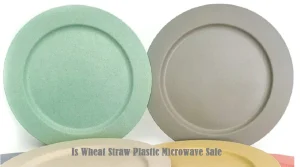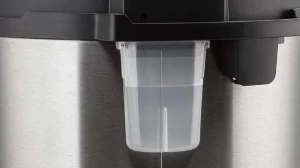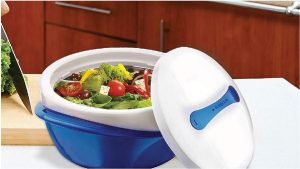Using Vegetable Steamers: Pros and Cons
A vegetable steamer, often referred to as a food steamer, is a compact kitchen appliance designed to cook various foods using steam heat. The process involves enclosing the food in a closed compartment, allowing hot steam generated from water to cook it.
This indirect cooking method is efficient, saving time, money, and energy. Many users find that a steamer becomes their preferred method for preparing vegetables, as it makes the task swift and straightforward.
Steaming is recognized for preserving the natural nutrients, vitamins, and minerals in food, promoting a healthy diet. This method also retains the flavor and color of vegetables, rice, and fish, ensuring that meals are both tasty and visually appealing.
On the downside, some might argue that certain foods might lack the crispiness or browning achieved through other cooking methods. Yet, for those prioritizing health and efficiency, the benefits of using a steamer are evident.
Numerous models, including electric, stovetop, and microwavable ones, cater to various cooking needs and preferences.
You Might Also Like: Best Egg Steamers- Top 6 Choices
Vegetable Steamer Mechanics
A vegetable steamer operates on a simple yet effective principle. At its core, it uses the heat from steam to cook food. Water is poured into a compartment at the base of the steamer.
As this water heats up, it turns into steam. This steam rises and circulates around the food placed in a separate compartment above the water. The heat from the steam cooks the food, ensuring it remains moist and retains its natural flavors and nutrients.
The design of most steamers ensures even distribution of steam, resulting in uniformly cooked food.
Value of a Vegetable Steamer
Comparing vegetable steamers to other cooking methods reveals their distinct advantages.
Boiling vegetables can lead to nutrient loss, while frying can add unnecessary fats.
In contrast, steamers preserve the nutritional value and eliminate the need for added fats.
For those seeking a healthier lifestyle, a vegetable steamer is a valuable addition to the kitchen.
Top Uses for Vegetable Steamers
Vegetable Preparation: The primary use, steaming vegetables ensures they retain their color, texture, and nutritional value.
Rice and Grains: Beyond vegetables, steamers can perfectly cook rice and other grains, ensuring a fluffy and non-sticky texture.
Fish: Steaming fish ensures it remains tender and moist, capturing its delicate flavors.
Poultry and Meat: While not as common, steamers can cook certain cuts of poultry and meat, ensuring they remain juicy.
Dumplings and Buns: Many cuisines use steamers to prepare soft, fluffy dumplings and buns.
Advantages and Drawbacks of Using a Vegetable Steamer
Pros
Nutrient Retention: Steaming preserves the vitamins and minerals in food.
No Need for Oils: Eliminates added fats, promoting healthier eating.
Uniform Cooking: The design ensures even steam distribution.
Versatility: Suitable for a range of foods beyond just vegetables.
Cons
Limited Browning: Foods won’t have the crispy exterior some recipes might require.
Size: Larger steamers can take up considerable counter space.
Energy Consumption: Electric models can consume more energy compared to stovetop methods.
Maintenance: Regular cleaning is essential to prevent mineral buildup.





